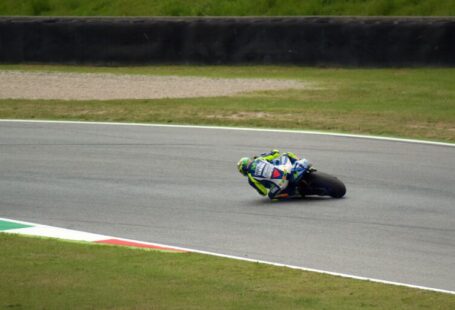It’s the early 20th century, and you are an enthusiast in the relatively new pastime of motorcycling. The trouble is, it’s winter. What’s a motorcyclist to do? Why, fit your tires with sharp metal spikes and ride it on the ice, of course! And, as tends to happen, it wasn’t long before someone (or someones) came up with the bright idea that wouldn’t it be fun to race each other on said ice. The sport of motorcycle ice racing was born.
According to the Fédération Internationale de Motocyclisme (FIM), the global governing and sanctioning body of motorcycle racing, the first record of ice racing is from Sweden in 1924. By the early 1930s, racers were fitting longer studs, allowing deeper lean angles and therefore faster speeds, and had discovered that bikes with lower frames handled best. The first “official” race took place in Moscow in 1939, before being sidelined while the world went to war.
Ice racing spread across northern and central Europe in the late 1940s and into the 50s, with national championships developing in the Scandinavian countries, the Soviet Union, Czechoslovakia and Germany. As it grew in popularity, competitions went international, using 500cc Speedway bikes. On the national level, other classes were added, such as 125cc, 350cc and sidecar—because the only thing better than piloting a spike-studded machine at 60mph around a frozen lake was doing it with your buddy hanging off your sidecar.
The first FIM Ice Racing Cup took place in 1963, with Soviet rider Boris Samorodov taking the championship. The Soviets went on to dominate the sport, although here and there a Swedish or Czech rider managed to pull out a championship. In 1994, the FIM went to a Grand Prix system, replacing the winner-takes-all World Final with a series; in 2016 the “FIM Ice Speedway Gladiators” series made stops in six cities, all in Europe.
Both the AMA (American Motorcyclist Association) and the CMA (Canadian Motorcycle Association) have sanctioned ice racing series, where riders use motocross or dirt bikes rather than the Speedway bikes used in Europe. They race on ovals (which run counterclockwise) and GP-style “road courses” with both left and right turns, arranged on frozen lakes and ponds.
If motorcycle ice racing sounds like fun (of course it does!), there are plenty of grassroots organizations that will help you put the stud to the ice and see if ice racing is something you’d like to try. It sure beats sitting around all winter gazing glumly out at your icy, frozen neighborhood streets.
Sources:
Fédération Internationale de Motocyclisme www.fim-live.com
American Motorcyclist Association www.americanmotorcyclist.com



